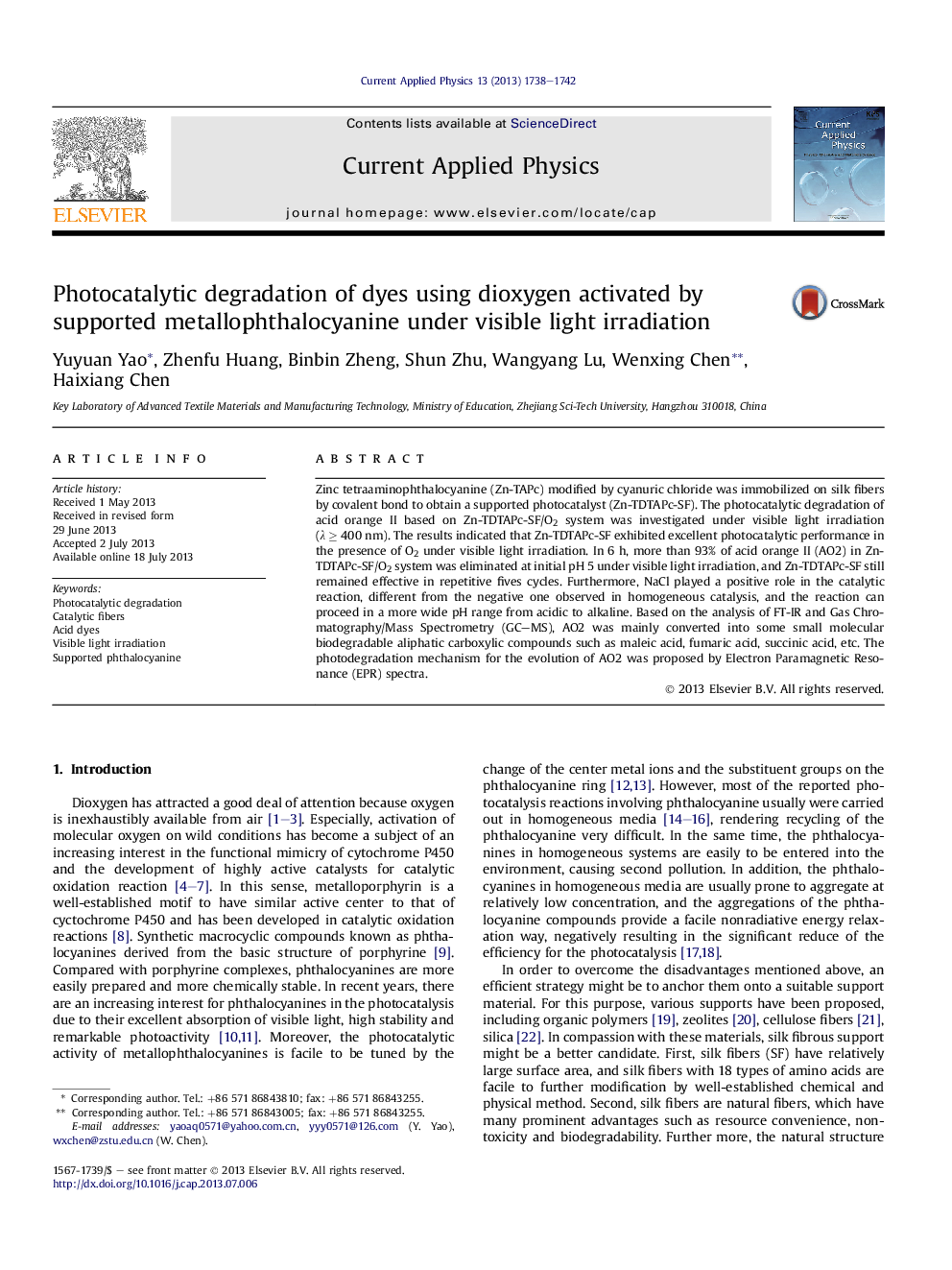| Article ID | Journal | Published Year | Pages | File Type |
|---|---|---|---|---|
| 1785995 | Current Applied Physics | 2013 | 5 Pages |
•Dioxygen can be activated to degrade dyes by Zn-TDTAPc-SF under visible light.•NaCl is an accelerant in Zn-TDTAPc-SF/O2 catalytic systems.•Zn-TDTAPc-SF is an effective heterogeneous photocatalyst at pH 3.0–9.0.
Zinc tetraaminophthalocyanine (Zn-TAPc) modified by cyanuric chloride was immobilized on silk fibers by covalent bond to obtain a supported photocatalyst (Zn-TDTAPc-SF). The photocatalytic degradation of acid orange II based on Zn-TDTAPc-SF/O2 system was investigated under visible light irradiation (λ ≥ 400 nm). The results indicated that Zn-TDTAPc-SF exhibited excellent photocatalytic performance in the presence of O2 under visible light irradiation. In 6 h, more than 93% of acid orange II (AO2) in Zn-TDTAPc-SF/O2 system was eliminated at initial pH 5 under visible light irradiation, and Zn-TDTAPc-SF still remained effective in repetitive fives cycles. Furthermore, NaCl played a positive role in the catalytic reaction, different from the negative one observed in homogeneous catalysis, and the reaction can proceed in a more wide pH range from acidic to alkaline. Based on the analysis of FT-IR and Gas Chromatography/Mass Spectrometry (GC–MS), AO2 was mainly converted into some small molecular biodegradable aliphatic carboxylic compounds such as maleic acid, fumaric acid, succinic acid, etc. The photodegradation mechanism for the evolution of AO2 was proposed by Electron Paramagnetic Resonance (EPR) spectra.
